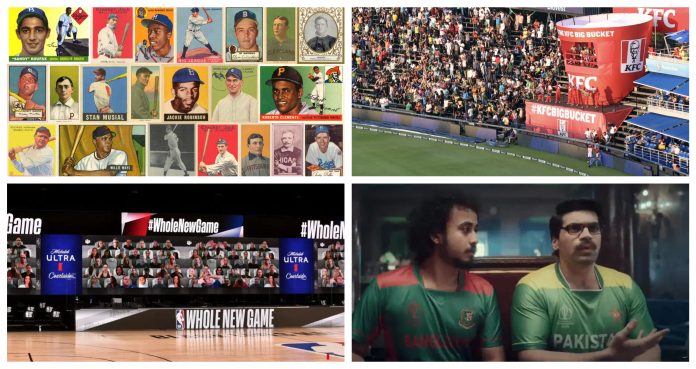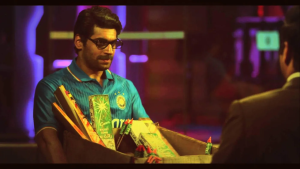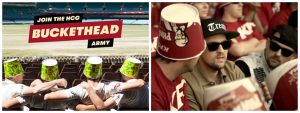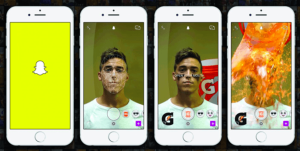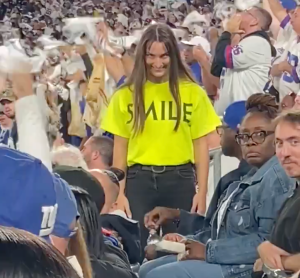Throughout the history of sports, spectators have played an integral role. From the ancient spectacles of blood sports within the grand Colosseums to the contemporary fervour of fans filling football stadiums today or other sports ground, sports have consistently drawn audiences who passionately rally behind their teams. This heightened sense of competition intensifies the excitement, especially when supporters of rival teams find themselves seated face-to-face.
From their inception, sports have effortlessly captured what businesses still invest billions to attain – an emotionally engaged and dedicated audience. Over time, brands recognized the potential of partnering with these sporting events, capitalizing on their magnetic appeal to effectively convey messages to the attentive spectators.
Sports were meant to be played on grounds that were historically only accessible to in-person spectators, but with the evolution of its coverage came the evolution of the partnerships that brands fostered with these sporting events. From Tobacco Cards in the 19th Century, which featured pictures of baseball athletes on cards and placed inside cigarette packs, to the time that proper stadiums were built for various sports, all have featured elements of branding or advertising.
When radio and television became mainstream and sporting events were covered as part of their programming, advertisers found priceless opportunities to tap into the large audiences now accessing these sporting events through multimedia. Sporting brands such as Adidas started giving away free merchandise to players in a bid to increase their brand’s visibility.
With this year’s Asia Cup in full swing and Pakistani spirits high, there could not be a better time to deliberate on the wealth of branding opportunities that sports advertising offers. With the advent of digital media, brands today are making magic happen on the ground as well as in people’s homes – all by cleverly piggybacking on the hype and excitement of various sports events.
Good vs Great Sports Advertising
What sets impactful sports advertising apart from mere sponsorships or the routine placement of ads during televised sports matches is the strategic interplay of three fundamental components: the cleverness of the message, the relevance of the brand with the sport and the uniqueness of its execution.
Successful sports advertising hinges on crafting a message that is not just compelling but also cleverly constructed. This involves developing content that goes beyond basic promotion and connects with viewers through sentimental value. By incorporating humour, storytelling, or thought-provoking concepts, advertisers can ensure that their message leaves a lasting impression. For example, Star Sports’ viral ‘Mauka Mauka’ campaign in 2015 was able to ensure the idea stuck with audiences due to the way it tapped into people’s sense of rivalry and the historical Pakistan-India feud.
Relevance is key
Relevance plays a huge role in determining whether people will remember the brand behind the advertising or just the content itself. No brand would want to spend millions in a campaign only to realize that people have no idea who made the ad. David Ogilvy’s quote sums it up best, ‘When I write an advertisement, I don’t want you to tell me that you find it ‘creative.’ I want you to find it so interesting that you buy the product.” Budweiser, in its classic ‘Wazzaa’ campaign developed for Monday Night Football in 1999, ensured relevance by creating relatability and representing the combination of watching a game while having a beer with your friends.
Execution is everything
After refining the message and ensuring its relevance, the focus shifts to execution. Will it be just another conventional televised ad, or is there room to infuse the campaign with an extra layer of excitement? One illustrative instance hails from KFC, who installed a life-sized bucket within the cricket stadium, pledging scholarships through its Mitao Bhook initiative, with each successful sixer that landed inside the bucket. They also came up with the ‘buckethead’ idea, where they encouraged customers to wear the KFC bucket as a hat in many games across the world.
In 2016, Gatorade capitalized on the Super Bowl tradition of dunking and involved audiences sitting at home to experience the same by creating a unique Snapchat filter that allowed audiences to live the dunk through AR. Another brilliant example is Michelob Ultra Beer’s campaign with the NBA and Microsoft during COVID-19, in which they wrapped the entire basketball court with screens and invited audiences to join the match through Microsoft Teams.
Paramount Pictures came up with a creepy but ingenious idea to promote its new movie Smile last year – in which they paid actors to simply sit in the stands at baseball games and smile into the camera. They leveraged the excitement and the camerawork in the stadium to showcase something entirely unexpected. When spectators, as well as TV viewers watching the game, picked up on this stunt, the film received staggering media attention.
Innovative ideas like these have the power to transcend the ordinary, providing sports viewers with an utterly distinctive experience. In the end, it’s the brands that master this art of distinction that emerge as the true champions of the field, leaving an indelible mark on the ever-evolving landscape of sports advertising.

